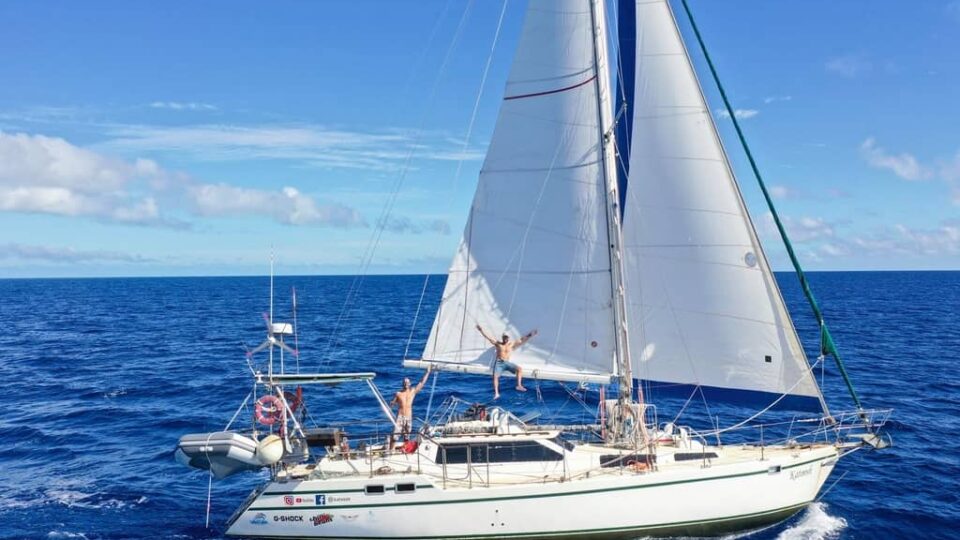What are the Best Sailboat Rigs?
Some of the most basic rig choices are the sloop, cutter, cat, ketch, and schooner, among others. But how can we choose among them? The type of rig is often a choice that is based on your sailboat size, preferred layout, and the maximum size of sail that can be handled. Moreover, there are two main rig configurations: fore-and-aft rig and square-rigged. Rigging is divided into two different categories, the standing that supports the mast, and the running which manages the orientation of the sails and their degree of furling. Rigging forms an essential part of your sailboat and is therefore important to know what are the best sailboat rigs so as to find out which one suits your sailboat. Let’s see up next!
>>Also Read: What is Sailboat Rigging?
The Bermuda Rig
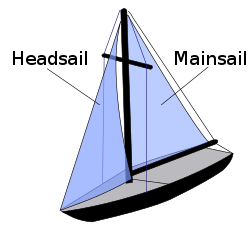
These tall triangular sails are called the Bermuda rig, or Marconi rig, and consist of one large, triangular-shaped sail that most of the time goes all the way to the top of the mast. In other words, the Bermuda rig has a single headsail or a sail forward of the mast. The main advantage of this type of rig is that it can sail upwind. Also, it has more power when the boat is sailing into the wind. Moreover, the single mainsail is easy to manage and the single headsail is easy to hoist and trim. The old square-rigged boats could sail with the wind behind them, thus the creation of the trade routes using the term “trade winds”. The Bermuda rig is a common variation of the Fractional sloop.
The Ketch Rig

The Ketch rig is ideal for a small cruising sailboat and is quite similar to the Cutter rig. However, the cutter rig breaks up the headsail area but the ketch rig breaks up the mainsail area into two smaller ones. In other words, on a ketch rig, you have two masts instead of one. The aft-most mast is called the mizzen mast and the sail is called the mizzen sail. Generally, a ketch rig can have either a headsail (sloop) or two headsails (cutter). Unlike the Bermuda rig, the Ketch rig performs better downwind and also performs great windward. The downside with the Ketch is that it can create confusion due to its different sail variations and extra sails. Lastly, due to its complex sail handling, downwind performance, and more sail combinations there are many experienced sailors that choose the ketch rig for long ocean cruising.
The Cutter Rig

The Cutter rig is similar to the Bermuda rig but it has a notable difference; instead of having one large headsail, the Cutter separates its forward sail area into two smaller headsails. This rig type is very common for sailboats that plan sailing on long-passages. This is because the smaller headsails are easier to manage by a single person. Also, the 3-sails configuration allows for different sail combinations something that helps in harsh weather conditions. Often, cutter rigs have a bowsprit that emerges from the bow of the sailboat and supports the two headsail area. The Cutter rig is also great for sailing into the wind, provides balance, and is ideal for open-ocean conditions.
The Gaff Rig

The Gaff rig is an old rigging configuration and has more to do with the sail’s shape than the number of sails. A gaff-rigged sailboat hoists a 4-cornered sail instead of a triangular 3-cornered one. This type of rig is not really common anymore but there are still many ketch style sailboats that originally had gaff sails. The gaff is not really efficient for sailing upwind but it offers great speed performance, ease of control, and sail direction than the square-riggers of that time.
The Sloop Rig
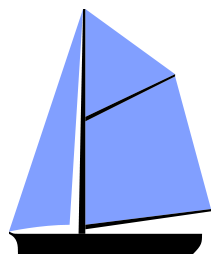
A sloop rig has a single-mast and a fore-and-aft sail configuration. This type of rigging is quite popular due to its great ability to sail upwind and it’s also appropriate for short-handing. However, the sloop rig is not advisable for boats more than 40ft as the sails will be difficult to manage. Furthermore, a great advantage of the sloop rig is that it has a simpler plan that allows for fewer wires and fewer costs in terms of maintenance and repair. The basic sail plan needs two sails but there are many sailors that buy genoas, spinnakers, gennakers, wind-seekers, and anything to maximize performance.
The Junk Rig
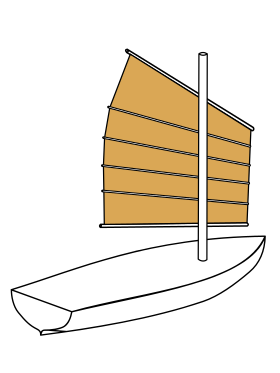
This rig type dates back to the 10th century when the Chinese were sailing the oceans with a rig that withstood for a long time. They managed to create a different sail plan and it was clear that they were way ahead of their time. Nowadays, there are some sailors who think that this very old sail plan is superior to the more popular Bermuda rig and others. The main characteristics of junk rigging are that it lacks stays and shrouds and that is based on fully battened sails. Because of this full batten set-up, the sails are fast downwind, easy to reef, and self-tacking. However, without having a standing rigging they’re more prone to damage, and most importantly they’re not good for upwind sailing.
The Yawl Rig
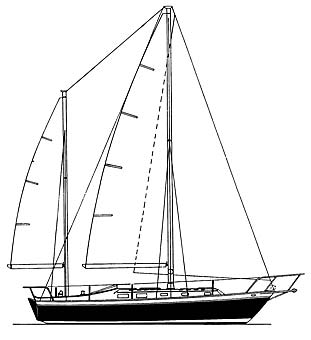
A yawl is very similar to a ketch. The yawl comes with two masts, the mizzenmast which is smaller and sets farther aft behind the rudder post, and the mainmast. There are many sailors that find the yawl rig unpractical and not quite efficient. Furthermore, some believe that the small sail configuration hanging over the stern is an advantage to steadying life at a mooring. On the other hand, others think that the mizzen on a yawl doesn’t provide any horsepower or ease-of-handling benefits. In any case, most sailors admit that yawls are good-looking and have a steady stature but are not really preferred for their sailing performance.
The Cat Rig
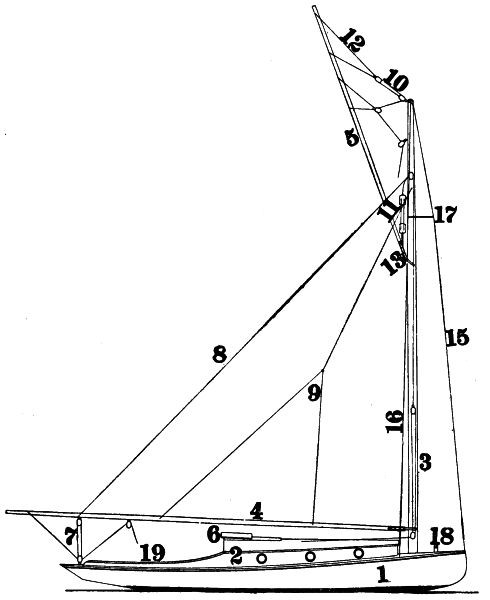
A cat rig consists of a single mast situated forward and near the bow. Also, it carries a large single sail and has no standing rigging. A great advantage of cat rigs is that they’re very simple to sail and manage. This is because they have one large sail and no rigging, therefore they can be single-handed quite easily. Moreover, on large vessels, the cat rig design offers a considerable amount of salon space. As the mast is placed far forward, this leaves plenty of room for the cabins. But there’s a crucial downside: upwind performance. Unlike the sloop rig, the cat rig might be easy to sail but it doesn’t perform well when sailing upwind. In any case, one can admit that cat rigs are maneuverable, simple, and economical. Lastly, they’re perfect for short-handed sailing and downwind passages.
The Schooner
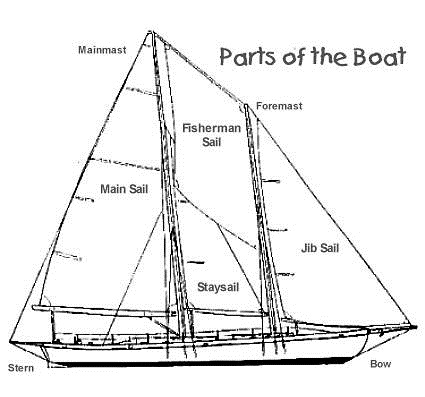
Generally, a typical schooner has two masts that are positioned forward in the sailboat. Unlike the ketch or yawl rigging, the forward mast is smaller than the aft mast. Also, there are one or more jibs placed forward of the foremast. Some schooners tend to use triangular Bermuda sails on either one or both masts. However, there are others that have gaff-rigged sails. There are some that still prefer the gaff rigging for long ocean cruising as it provides the ability to set more sail area on a given length of the mast.
However, the gaff rig is not as efficient as the Bermuda rig as it has more complicated rigging and requires more persons for sail handling. The gaff is a short spar situated at the top of the sail and allows the sail to extend back along a fourth side. Like this, it gains size over a triangular sail of the same height.
>>Also Read: The Different Types Of Sailboats
The Bottom Line
So, what are the best sailboat rigs? The answer depends on different factors and the choices you make are mostly a matter of one’s sailing preferences. There’s no wrong or right rigging and once you know what you want from your sailing experience and function of your sailboat then choosing the right rig for your sailboat will be much easier. Some say that the ketch rig is unbeatable for off-shore sailing while others say that the Bermuda sloop is the most efficient for sailing into the wind. On the other hand, cutters are great for racing and cruising but they’re not quite efficient to windward as a sloop-rigged.
As for schooners, they’re generally easy to balance, are powerful, and offer a great sail plan. But, they have two halyards per sail, no running backstays, and not quite good upwind performance. In any case, I hope you enjoyed reading this article about sailboat rigging and that it’ll help you choose the best rig that suits your needs!
